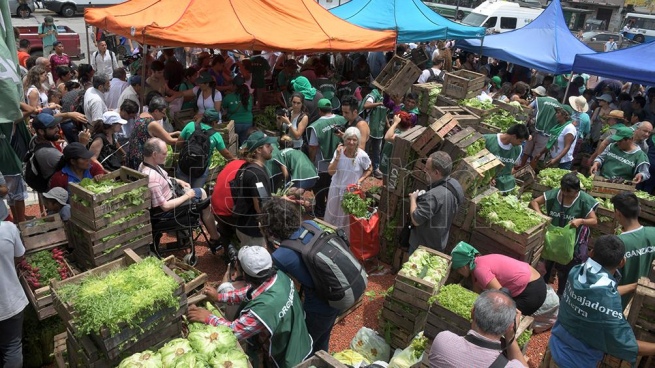The consumers of agricultural and livestock products paid 3.45 times what their producers received in January, 7.2% less than the price gap that existed in December, while the producer’s participation in the final price jumped to 31.8%, according to a survey by the Argentine Chamber of Medium-sized Enterprises (CAME).
The data comes from the Origin and Destination Price Index (IPOD) that CAME prepares based on the 24 main agricultural products that are served at the family table based on daily online prices of the main supermarkets in the country, more than 700 prices of greengrocers and markets for each product, and prices of origin of the main producing areas.
According to the survey, the monthly improvement of the IPOD, considering the seasonality of the products, occurred because the The prices paid to the producer rose well above (+59.2%) the prices charged to the consumer on the shelf (+20%).
The largest gap between price of origin and destination occurred in carrotswith a difference of 23.1 times, followed by the zucchini (13.5 times), orange (9.4 times), lemon (7 times) and pumpkin, also with a gap of 7 times.
The products with the smallest gaps, meanwhile, were lettuce (1.3 times), broccoli (1.5 times), eggplant (1.6), eggs (1.8) and chicken (2).
The producer’s average participation in the final price of the 24 surveyed products rose 26.4%, from 26.3% in December to 31.8%.
And if this participation is weighted by the weight of each product in the sales of the Central Market of Buenos Aires and based on data from the Ministry of Agriculture, Livestock and Fisheries of the Nation, it rises to 37.4% in January (from 36, 6% in December).
The greatest participation was achieved by lettuce producers, who received on average 74.4% of their retail price, while the worst occurred in carrots, where the producer obtained just $4.3 of every $100 that the consumer paid. for that product.
In January, in 20 of the 24 products surveyed, local SME stores had better prices than hypermarkets.
In general, CAME explained, the differences are due to a set of behaviors: on the one hand, the speculative, adopted by different actors in the value chain that abuse their dominant position in the market –basically, hypermarkets, warehouses packaging and cold chambers–, and other factors such as seasonality, which affects certain products at certain times of the year, agro-climatic adversities, and storage/collection and transportation costs, among others.

















